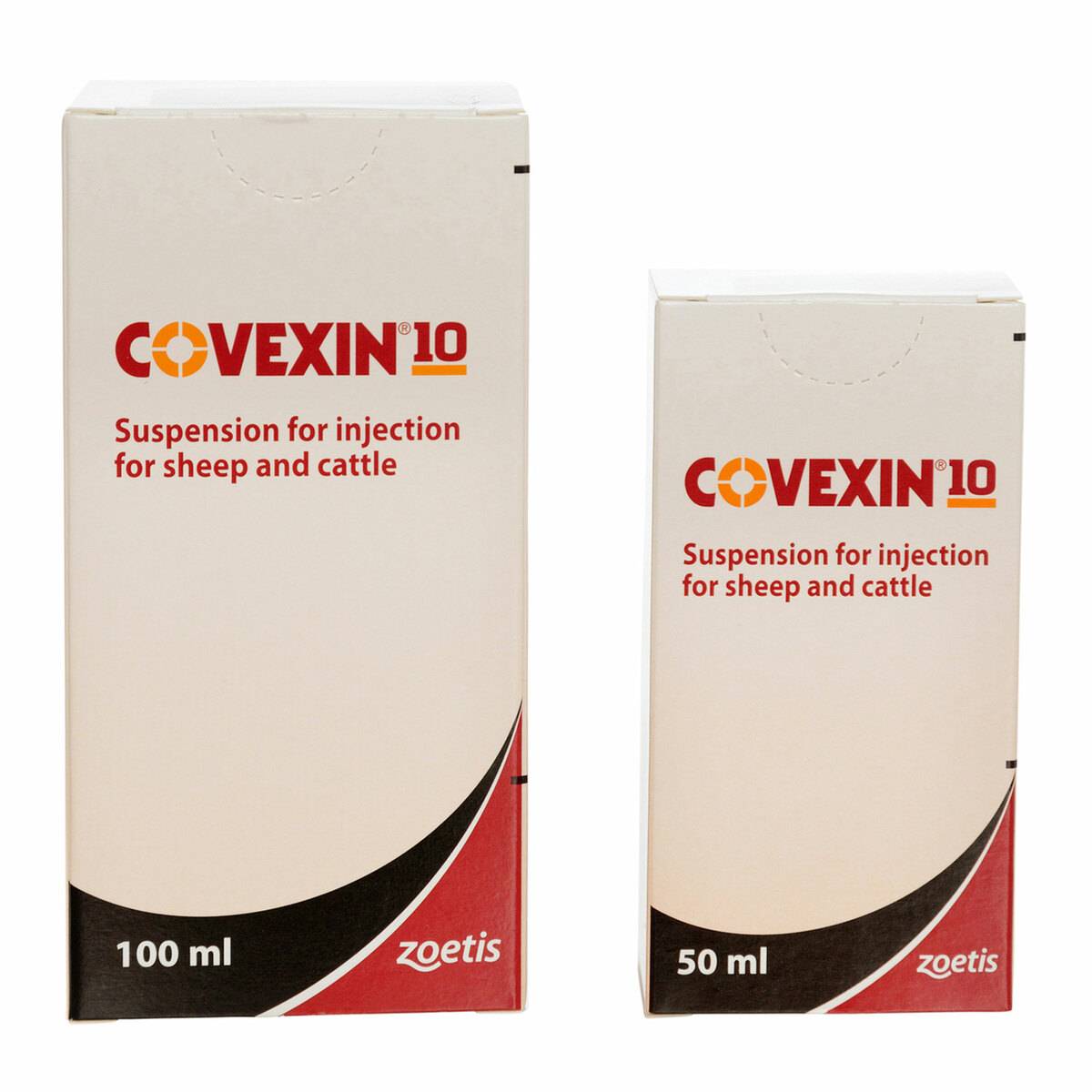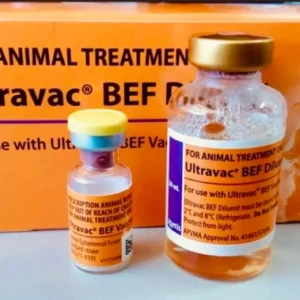Covexin 10 100ml for sale
Covexin 10 is a veterinary vaccine used to protect livestock, particularly cattle and sheep, against a wide range of clostridial diseases. Clostridial bacteria are anaerobic organisms that cause serious and often fatal diseases in animals. Covexin 10 helps to provide immunity against ten different clostridial diseases, making it a broad-spectrum vaccine. Here are the details: Covexin 10 100ml for sale, Covexin 10 price
Diseases Covered by Covexin 10
Covexin 10 protects against the following clostridial diseases:
Blackleg (Clostridium chauvoei)
Malignant Edema (Clostridium septicum)
Black Disease (Clostridium novyi Type B)
Enterotoxemia (Clostridium perfringens Type B, C, and D)
Tetanus (Clostridium tetani)
Pulpy Kidney Disease (Clostridium perfringens Type D)
Braxy (Clostridium septicum)
Clostridium sordellii
Clostridium haemolyticum (Redwater)
Administration
Species: Covexin 10 is primarily used in cattle and sheep.
Dosage: The vaccine is administered via subcutaneous injection, typically in the neck area.
Schedule:
Primary Vaccination: Young animals usually receive two doses, typically 4-6 weeks apart.
Booster Vaccination: Annual booster doses are recommended to maintain immunity.
Benefits
Broad Protection: Covexin 10 offers protection against a wide range of clostridial diseases, some of which are rapidly fatal.
Convenience: Combining protection against multiple diseases in a single vaccine reduces the need for multiple vaccinations and simplifies herd health management.
Economic Value: Preventing these diseases helps reduce losses in livestock, making it a cost-effective health management tool for farmers. Covexin 10 price
Side Effects and Considerations
Injection Site Reactions: As with any vaccine, some animals may experience mild swelling or soreness at the injection site.
Adverse Reactions: Rarely, more severe allergic reactions can occur, so it is important to monitor animals after vaccination.
Covexin 10 100ml for sale
Handling and Storage: The vaccine should be stored properly, usually refrigerated, to maintain its effectiveness.
Veterinary Consultation
Usage Guidance: Farmers and livestock handlers should consult with a veterinarian to determine the appropriate vaccination schedule and dosage for their specific herd, as well as to discuss any potential risks or side effects.
Summary
Covexin 10 is an important vaccine in livestock management, providing essential protection against a broad range of clostridial diseases that can cause significant morbidity and mortality in cattle and sheep. Regular vaccination with Covexin 10, under veterinary guidance, helps ensure the health and productivity of the herd.
Dosage and administration for Covexin 10
The dosage and administration of Covexin 10 vary slightly between cattle and sheep, but the general guidelines are as follows:
For Cattle:
Primary Vaccination:
Dosage: 5 mL per animal.
Schedule: Administer the first dose at least 2 weeks before the period of risk (e.g., before calving or moving animals to higher-risk areas). A second dose should be administered 4-6 weeks after the first dose.
Booster Vaccination:
Dosage: 5 mL per animal.
Schedule: A single booster dose should be given annually to maintain immunity. In high-risk situations or endemic areas, a booster dose may be given every 6 months.
For Sheep:
Primary Vaccination:
Dosage: 2 mL per animal.
Schedule: Administer the first dose at least 2 weeks before the period of risk. A second dose should be administered 4-6 weeks after the first dose.
Booster Vaccination:
Dosage: 2 mL per animal.
Schedule: A single booster dose should be given annually to maintain immunity. In high-risk situations or endemic areas, a booster dose may be given every 6 months.
Administration:
Route: Covexin 10 should be administered via subcutaneous injection.
Injection Site for Cattle: Typically, the injection is given in the loose skin on the side of the neck.
Injection Site for Sheep: Typically, the injection is given in the loose skin on the side of the neck or behind the shoulder. Covexin 10 price
General Considerations:
Handling and Storage: Covexin 10 should be stored in a refrigerator (2°C to 8°C) and should not be frozen. The vaccine should be brought to room temperature before administration and should be used within a certain time after opening (typically the same day).
Prevention of Injection Site Contamination: Ensure that the injection site is clean and dry before administration to minimize the risk of introducing contaminants that could lead to infections.
Vaccination Timing: Ideally, animals should be vaccinated at least 2 weeks before they are exposed to conditions that may increase the risk of clostridial diseases (e.g., before lambing, calving, or moving to a new grazing area).
Hygiene: Use sterile needles and syringes, and follow proper hygiene practices to prevent contamination.
Veterinary Guidance:
Always consult with a veterinarian before starting a vaccination program to ensure the appropriate use of Covexin 10 based on the specific needs of the herd or flock, local disease risks, and any recent updates to vaccination protocols.
Poyential side effect for Covexin 10
Covexin 10, like any vaccine, can have potential side effects, though serious adverse reactions are rare. Here are the possible side effects associated with Covexin 10:
Common Side Effects:
Injection Site Reactions:
Swelling: Mild to moderate swelling at the injection site is common and usually resolves on its own within a few days.
Soreness or Pain: The area where the vaccine is injected may be sore or painful for a short time after administration.
Mild Fever:
Some animals may develop a slight fever following vaccination, which typically resolves without intervention.
Temporary Lethargy:
Animals may appear slightly lethargic or less active for a day or two after vaccination as their immune system responds to the vaccine.
Less Common Side Effects:
Allergic Reactions:
Signs: Rarely, animals may experience allergic reactions, which can include symptoms such as swelling of the face or muzzle, difficulty breathing, hives, or sudden collapse.
Management: Immediate veterinary attention is required if an allergic reaction is suspected.
Abscess Formation:
In rare cases, an abscess (a localized collection of pus) may develop at the injection site. This can occur if bacteria are introduced during the injection process or if the animal has an unusually strong reaction to the vaccine. Covexin 10 price
Anaphylaxis:
Signs: Anaphylaxis is an extremely rare but life-threatening allergic reaction that can occur shortly after vaccination. Symptoms include severe difficulty breathing, collapse, and shock.
Management: Anaphylaxis requires immediate emergency veterinary care.
Very Rare Side Effects:
Immunological Reactions:
In very rare instances, the animal’s immune system may react in unexpected ways, leading to more serious immune-mediated conditions. This is extremely uncommon.
Monitoring and Management:
Post-Vaccination Observation: Animals should be observed for a period after vaccination to monitor for any adverse reactions, particularly within the first 24 hours.
Reporting Side Effects: Any unexpected or severe side effects should be reported to a veterinarian. In some cases, it may also be necessary to report the reaction to the vaccine manufacturer or regulatory authorities.
Reducing Risk:
Proper Handling and Administration: Ensuring that the vaccine is stored, handled, and administered according to the manufacturer’s instructions can help reduce the risk of side effects.
Sterile Technique: Using sterile needles and syringes and maintaining cleanliness at the injection site can help prevent infections and abscesses.
Summary:
Most animals tolerate Covexin 10 well, with only mild, short-lived side effects. However, as with any vaccine, there is a small risk of more serious reactions, so it’s important to monitor animals after vaccination and consult a veterinarian if any concerns arise. Covexin 10 100ml for sale





Reviews
There are no reviews yet.